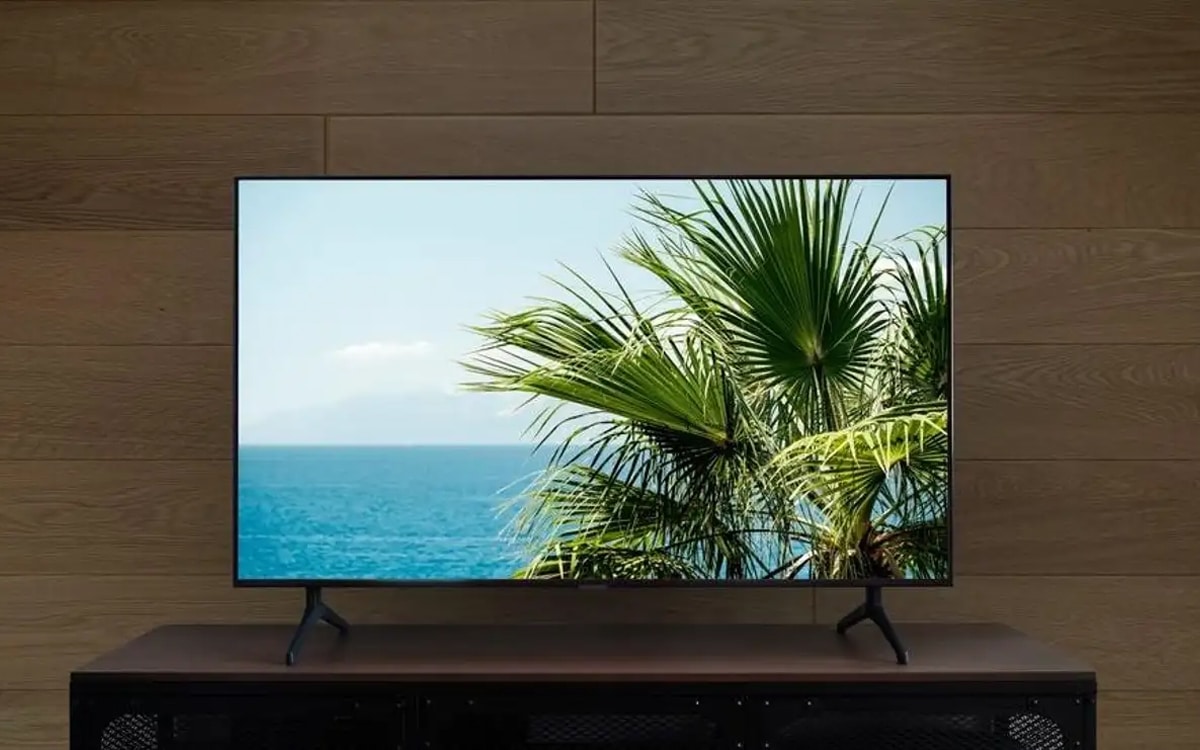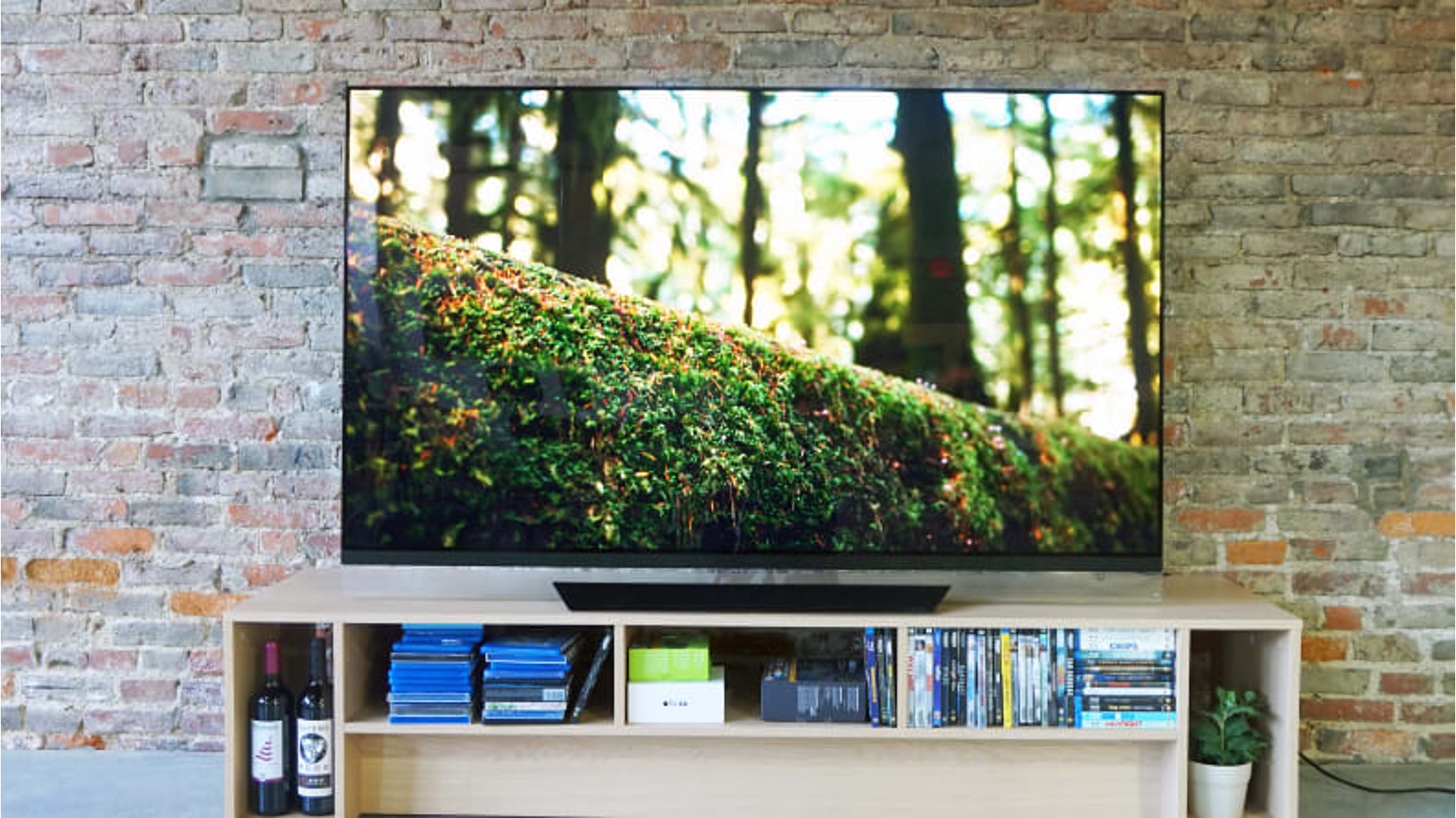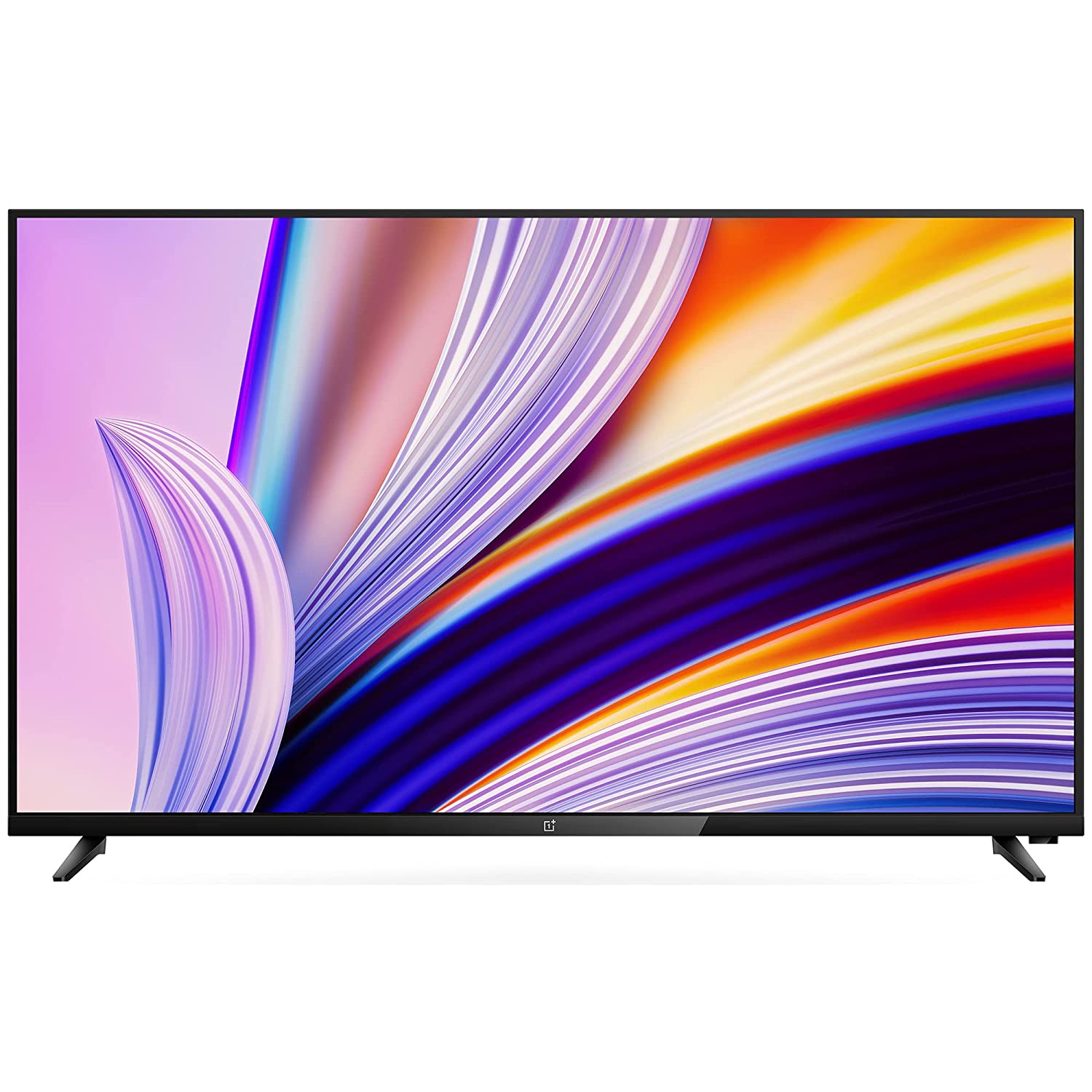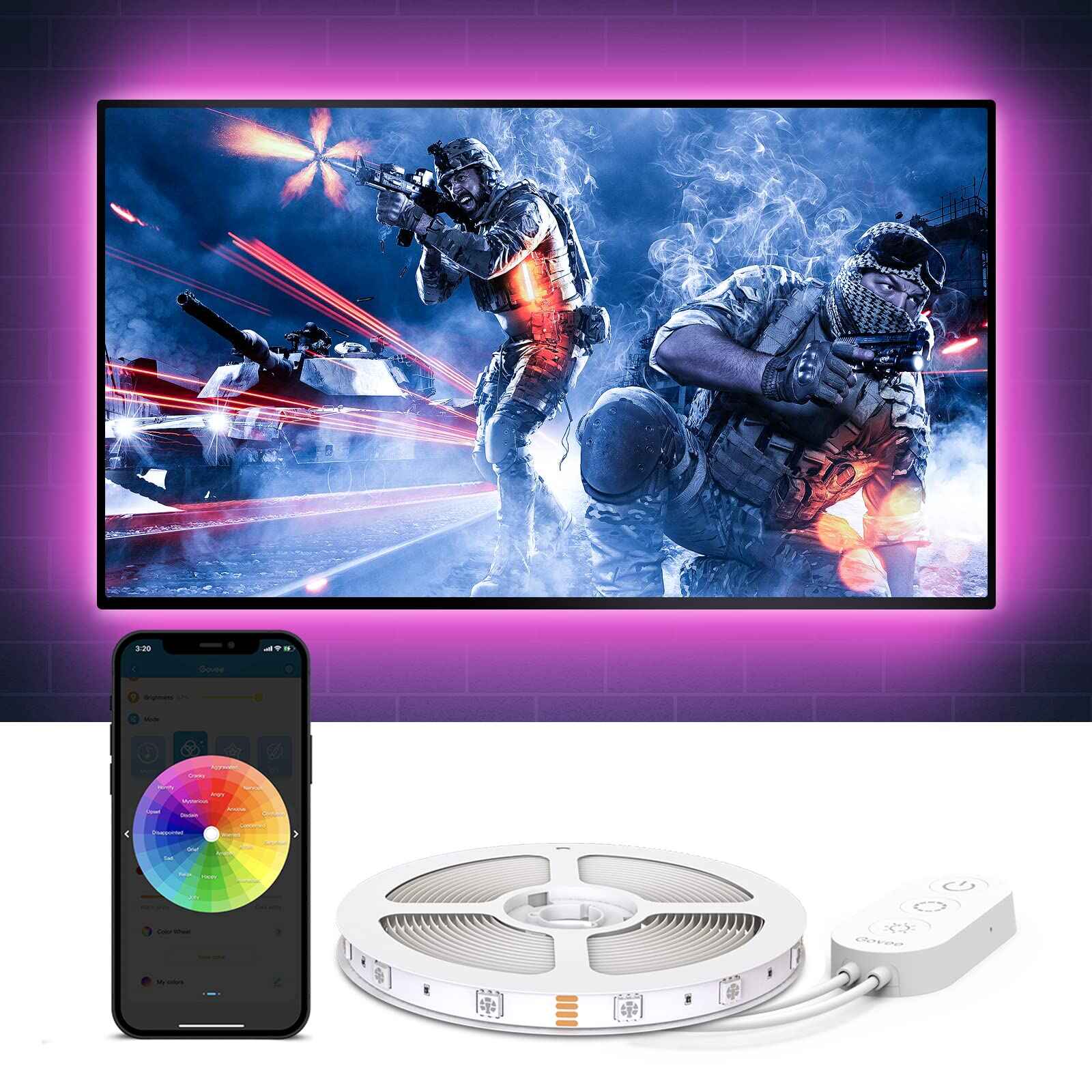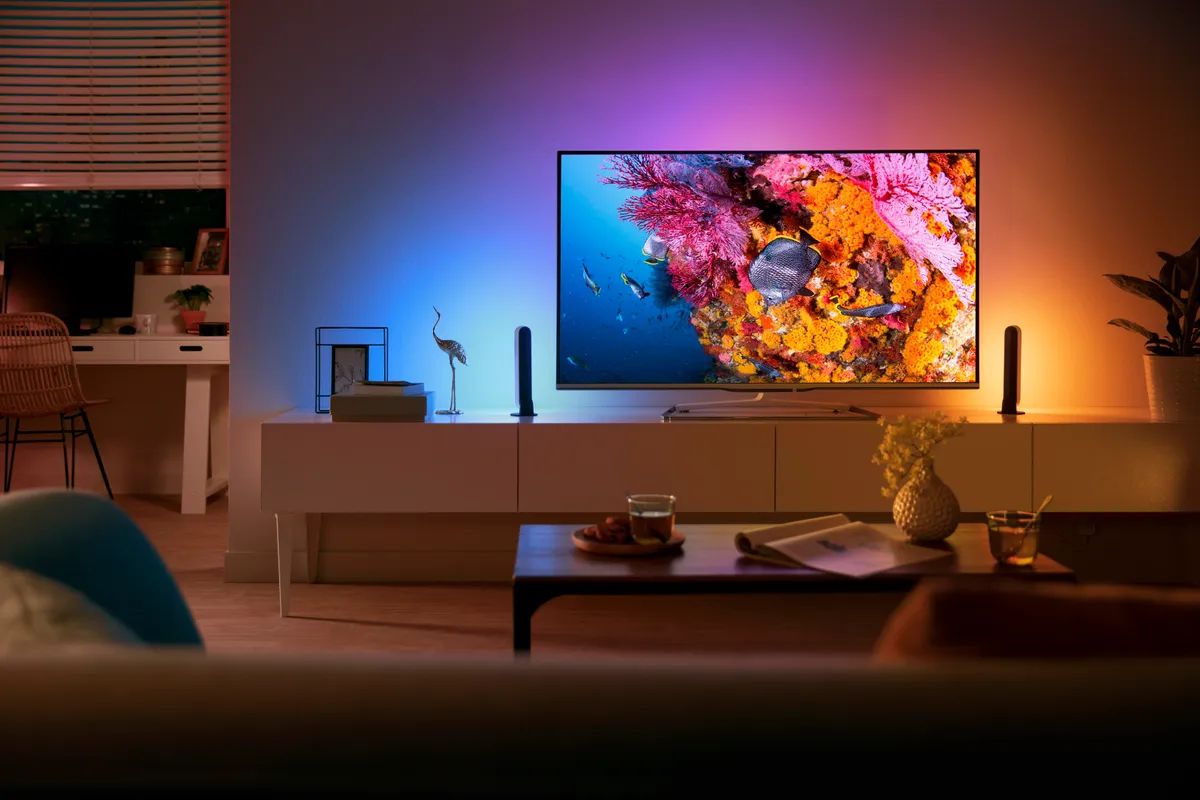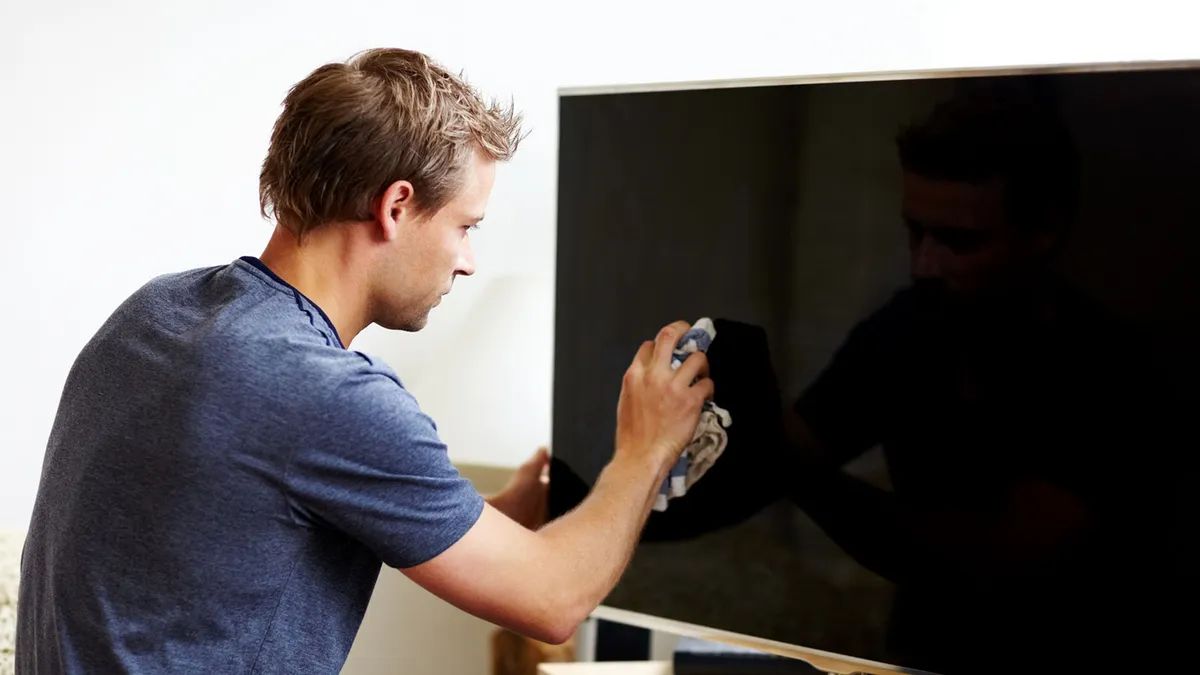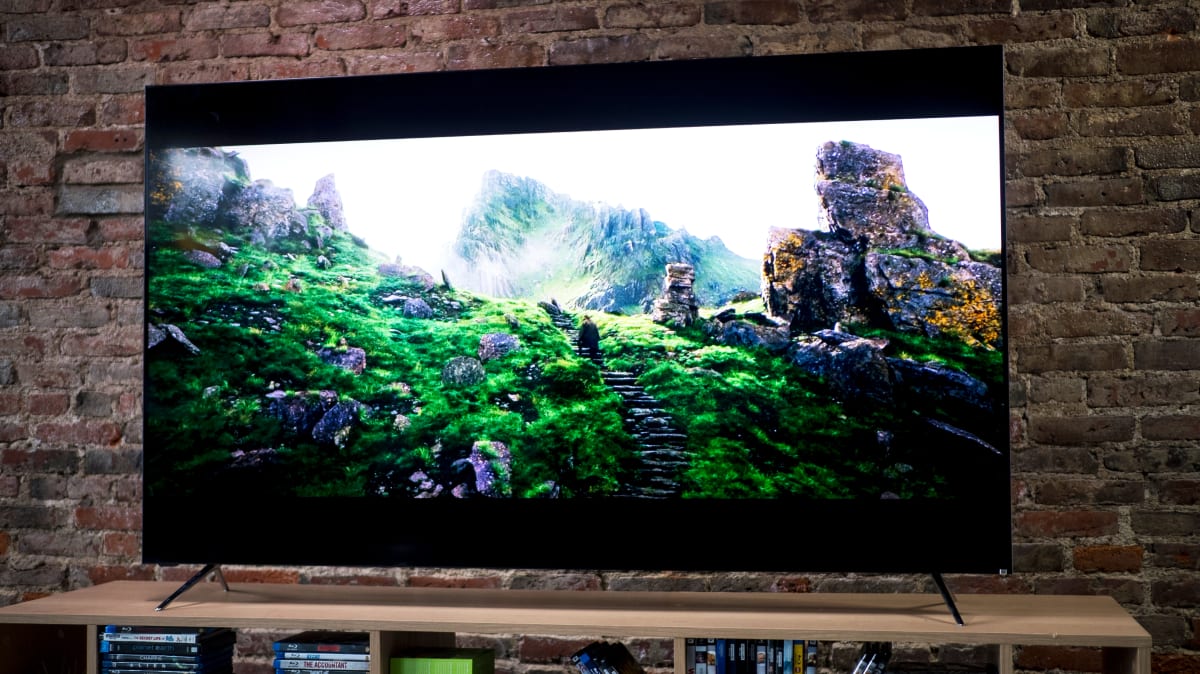Introduction
Having a fading screen on your LED TV can be frustrating. It can affect your viewing experience and make it difficult to enjoy your favorite shows and movies. However, there are common causes for this issue, and fortunately, there are troubleshooting steps you can take to fix it.
A fading screen on an LED TV can be caused by various factors, such as incorrect backlight settings, faulty cables, outdated firmware, or even a need to reset the TV to factory settings. By identifying and addressing these issues, you can restore the vibrant picture quality that you deserve.
In this article, we will explore the common causes of a fading screen on an LED TV and provide you with step-by-step troubleshooting solutions. Whether you are a tech-savvy individual or a beginner, these tips and tricks will help you resolve the problem and get your TV back to its optimal performance.
It is important to note that while these troubleshooting steps can resolve most cases of a fading screen, there may be instances where professional assistance is required. If you are unsure or uncomfortable about performing any of the solutions mentioned, it is always recommended to consult a professional.
So, if you’re tired of dealing with a fading screen and want to enjoy crystal-clear images on your LED TV, let’s dive into the common causes and troubleshooting solutions that will help you fix this issue!
Common Causes of Fading Screen on LED TV
There are several common causes that can lead to a fading screen on an LED TV. Understanding these causes can help you pinpoint the root of the problem and take appropriate measures to fix it. Let’s explore the most frequent culprits:
- Incorrect backlight settings: LED TVs come with adjustable backlight settings to control the brightness of the screen. If the backlight setting is too low, it can result in a fading or dimming screen. On the other hand, if the backlight is set too high, it can cause an overly bright or washed-out image.
- Faulty cables: Loose or damaged cables can also contribute to a fading screen. The HDMI or AV cables that connect your TV to external devices like a cable box or gaming console may be faulty, causing an unreliable video signal and resulting in a faded screen.
- Outdated firmware: Firmware refers to the software that runs on your TV. If your TV’s firmware is outdated, it can cause various issues, including a fading screen. Manufacturers regularly release firmware updates to fix bugs and improve performance, so keeping your TV’s firmware up to date is essential.
- Overheating: Overheating can affect the performance of electronic devices, including LED TVs. If your TV is not properly ventilated or if the internal components become excessively hot, it can result in a fading screen. Ensure that your TV has sufficient airflow and avoid placing it in closed cabinets or against walls.
- Defective hardware: In some cases, a fading screen may be caused by defective hardware components. This can include issues with the LED backlight itself or other internal components that impact the display quality. If none of the troubleshooting steps resolve the problem, it is advisable to reach out to a professional for further assistance.
By identifying the cause of the fading screen, you can take the necessary steps to fix it. In the next section, we will provide you with troubleshooting solutions that will help you resolve this issue and restore the vibrancy of your LED TV screen.
Troubleshooting Steps to Fix Fading Screen on LED TV
Experiencing a fading screen on your LED TV can be frustrating, but there are several troubleshooting steps you can take to resolve the issue. Follow these steps to bring back the vibrant and crisp display:
- Adjust Backlight Settings: Start by adjusting the backlight settings on your TV. Access the menu or settings options on your TV and look for the backlight or brightness settings. Increase the backlight if the screen is too dim or decrease it if the screen is too bright. Find the optimal setting that suits your viewing preference.
- Check and Replace Faulty Cables: Inspect all the cables connected to your TV, such as HDMI or AV cables. Ensure that they are securely plugged in and not damaged. If you notice any signs of wear or if the cables are loose, try replacing them with new ones to ensure a stable connection and eliminate any potential video signal issues.
- Update TV Firmware: Check if there are any firmware updates available for your TV. Manufacturers regularly release firmware updates to address bugs and improve performance. Consult your TV’s user manual or visit the manufacturer’s website for instructions on how to update the firmware. This simple step can often resolve various issues, including a fading screen.
- Reset TV to Factory Settings: If none of the above solutions work, you can try performing a factory reset on your TV. This will revert the TV settings back to the original factory defaults. Refer to your TV’s user manual to find the reset option and follow the instructions provided. Keep in mind that performing a factory reset will erase any customized settings, so make sure to note down any important configurations beforehand.
- Consult Professional for Repairs: If you have exhausted all the troubleshooting steps and the fading screen issue persists, it may indicate a hardware problem. In such cases, it is advisable to seek professional assistance. Contact the manufacturer’s customer support or a qualified TV repair technician who can diagnose and fix the issue.
Keep in mind that these troubleshooting steps are general guidelines and may vary depending on your specific TV model. Refer to your TV’s user manual or manufacturer’s website for model-specific instructions.
Now that we have explored the troubleshooting steps, let’s move on to the next section where we will dive into specific solutions to address the fading screen on your LED TV.
Solution 1: Adjust Backlight Settings
One of the common causes of a fading screen on an LED TV is incorrect backlight settings. Fortunately, adjusting the backlight settings is a simple troubleshooting step that can help resolve this issue. Follow these steps to adjust the backlight settings:
- Access the menu or settings options on your TV. The exact location of these options may vary depending on your TV model.
- Look for the backlight or brightness settings. It is usually listed under the display or picture settings.
- Adjust the backlight level based on your preference. Increase the backlight if the screen is too dim or decrease it if the screen is too bright.
- Test different backlight levels to find the optimal setting that provides a vibrant and well-balanced display.
- Save the changes and exit the settings menu.
By adjusting the backlight settings, you can enhance the brightness or dimness of the screen, effectively addressing the issue of a fading display. Keep in mind that the optimal backlight level may vary depending on the lighting conditions in your viewing environment, so it’s recommended to make adjustments accordingly.
If adjusting the backlight settings does not resolve the fading screen problem or if the screen becomes overly bright or washed-out at any level, you may need to explore other troubleshooting solutions.
Now that you have successfully adjusted the backlight settings, let’s move on to the next section where we will discuss another possible solution—checking and replacing faulty cables.
Solution 2: Check and Replace Faulty Cables
Another possible cause of a fading screen on an LED TV is faulty cables. Loose or damaged cables can result in an unreliable video signal, leading to a faded or distorted display. To address this issue, follow these steps to check and replace faulty cables:
- Inspect all the cables connected to your TV, such as HDMI or AV cables. Check if they are securely plugged in to their respective ports on both the TV and the external device, such as a cable box or gaming console.
- Look for any signs of wear or damage on the cables. Examine the cable connectors, as well as the cable itself, for any visible issues such as fraying, bending, or broken pins.
- If you notice any damage or suspect that a cable may be faulty, try replacing it with a new cable. Make sure to use high-quality cables that are suitable for your specific TV and external devices.
- Ensure that the new cable is properly plugged in to both the TV and the external device, ensuring a secure and stable connection.
- Test the TV with the new cable to see if the fading screen issue has been resolved. If not, move on to the next troubleshooting solution.
Checking and replacing faulty cables is a straightforward process that can often fix issues related to a fading screen. Damaged or loose cables can cause interference and disrupt the video signal, resulting in a degraded display quality. By ensuring a reliable and properly connected cable setup, you can eliminate this potential cause.
If replacing the cables does not resolve the fading screen problem, continue reading the next section, where we will explore another troubleshooting solution: updating the TV firmware.
Solution 3: Update TV Firmware
Outdated firmware can contribute to various issues on an LED TV, including a fading screen. Manufacturers regularly release firmware updates to fix bugs, improve performance, and enhance compatibility with new technologies. Updating your TV’s firmware is a simple yet effective troubleshooting step that can potentially resolve the problem. Here’s how you can update your TV firmware:
- Check the manufacturer’s website or consult your TV’s user manual to find information about firmware updates. Look for the specific model of your TV and download the latest firmware version available.
- Transfer the firmware file to a USB flash drive. Ensure that the flash drive is formatted in a compatible file system (such as FAT32) and that it has sufficient storage capacity.
- Turn on your TV and insert the USB flash drive into the appropriate USB port on the TV.
- Access the TV’s menu or settings and navigate to the firmware update section. The exact location of this option may vary depending on your TV model.
- Select the option to update the firmware from the USB flash drive. Follow the on-screen instructions to initiate the update process.
- Wait for the firmware update to complete. It is important not to interrupt the update process or turn off the TV during this time.
- Once the update is finished, restart your TV and check if the fading screen issue has been resolved.
By updating the TV firmware, you ensure that your TV is running the latest software version, which can help fix bugs and improve overall performance. It is important to note that firmware update procedures may vary between different TV models, so refer to your TV’s user manual for specific instructions.
If updating the firmware did not resolve the fading screen problem, proceed to the next troubleshooting solution: resetting the TV to factory settings.
Solution 4: Reset TV to Factory Settings
If the fading screen issue on your LED TV persists after trying the previous solutions, resetting the TV to its factory settings can often help resolve the problem. Resetting your TV will revert all settings back to the original default configurations. Here’s how you can reset your TV:
- Access the menu or settings options on your TV. The location of this option may vary depending on your TV model.
- Look for the reset or restore factory settings option. It is usually listed under the system or general settings.
- Select the reset option and confirm your choice when prompted. Keep in mind that resetting the TV will erase all customized settings, including picture settings, sound settings, and network configurations.
- Wait for the TV to complete the reset process. The TV may turn off and back on during this time.
- Once the reset is finished, go through the initial setup process. This may include language selection, channel scanning, and network setup.
After resetting the TV to factory settings, check if the fading screen issue is resolved. The TV will now be back to its original default configurations, which can help eliminate any software-related problems that may have been causing the issue.
Keep in mind that resetting the TV should be considered as a last resort, as it will erase all customized settings. If the fading screen issue persists even after resetting the TV, it may be necessary to consult a professional for further assistance.
If none of the troubleshooting steps have been successful in resolving the problem, continue reading the next section, where we will discuss the final solution: consulting a professional for repairs.
Solution 5: Consult Professional for Repairs
If you have exhausted all the previous troubleshooting solutions and the fading screen issue on your LED TV persists, it may be time to seek professional assistance. A professional technician or the manufacturer’s customer support team can provide expert guidance and diagnose the precise cause of the problem. Here’s what you can do:
- Reach out to the manufacturer’s customer support. They can provide you with technical assistance and guidance on how to proceed.
- Explain the issue you are experiencing in detail, including any troubleshooting steps you have already taken.
- Follow any instructions provided by the customer support team, which may include scheduling a service appointment or sending the TV for repairs.
- If your TV is still under warranty, inquire about warranty coverage and any repair services that may be available.
- Consider seeking the assistance of a qualified TV repair technician if your TV is out of warranty or if the manufacturer’s customer support suggests it.
A professional technician will have the expertise and specialized tools to diagnose and fix complex issues with your LED TV. They can determine if there are any defective hardware components contributing to the fading screen and perform the necessary repairs.
Remember, it is important to entrust your TV repairs to reputable professionals who have experience in dealing with LED TVs. They can ensure that your TV is handled with care and that the repairs are done correctly.
By consulting a professional for repairs, you can have peace of mind knowing that your LED TV is being taken care of by experts and that every effort is being made to resolve the fading screen issue.
After trying all the troubleshooting steps and seeking professional assistance, you have taken the necessary measures to address the fading screen on your LED TV. By following these solutions, you can hopefully restore the vibrant picture quality and enjoy your favorite content without any distortion.
Conclusion
Dealing with a fading screen on your LED TV can be frustrating, but with the right troubleshooting steps, you can resolve the issue and restore the vibrant picture quality. By understanding the common causes of a fading screen, such as incorrect backlight settings, faulty cables, outdated firmware, or hardware defects, you can take appropriate measures to address the problem.
In this article, we have discussed several troubleshooting solutions to help you fix a fading screen on your LED TV. From adjusting the backlight settings to checking and replacing faulty cables, updating the TV firmware, resetting the TV to factory settings, and consulting a professional for repairs, each step is designed to tackle specific potential causes of the issue.
It is important to note that while these solutions can resolve most cases of a fading screen, there may be instances where professional assistance is required. If you are uncomfortable performing any of the troubleshooting steps or if the problem persists, it is recommended to consult a professional technician or reach out to the manufacturer’s customer support for further assistance.
Remember to always refer to your TV’s user manual or the manufacturer’s website for model-specific instructions and to ensure that you are following the appropriate steps for your specific TV.
By following the troubleshooting steps outlined in this article, you can enhance your viewing experience and enjoy the vibrant, crisp display that your LED TV is designed to deliver.
We hope that this guide has been helpful in resolving the fading screen issue on your LED TV. With the right solutions and a little patience, you can bring back the stunning picture quality and enjoy your favorite shows and movies without any distractions.









